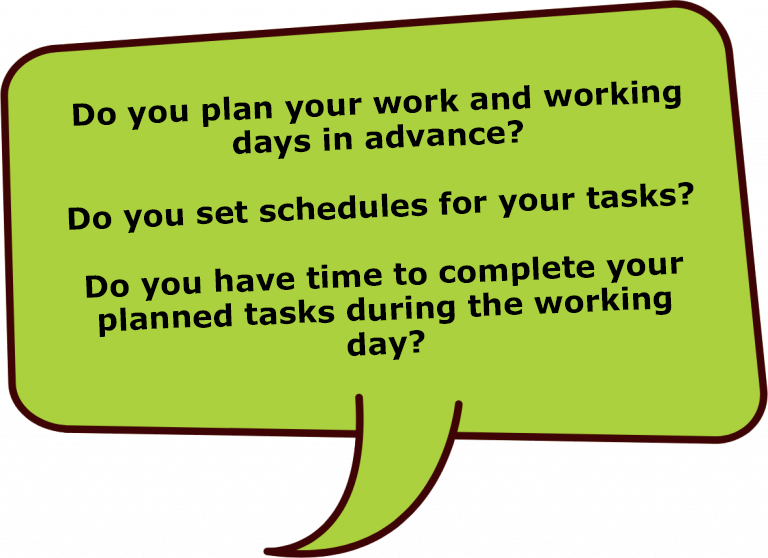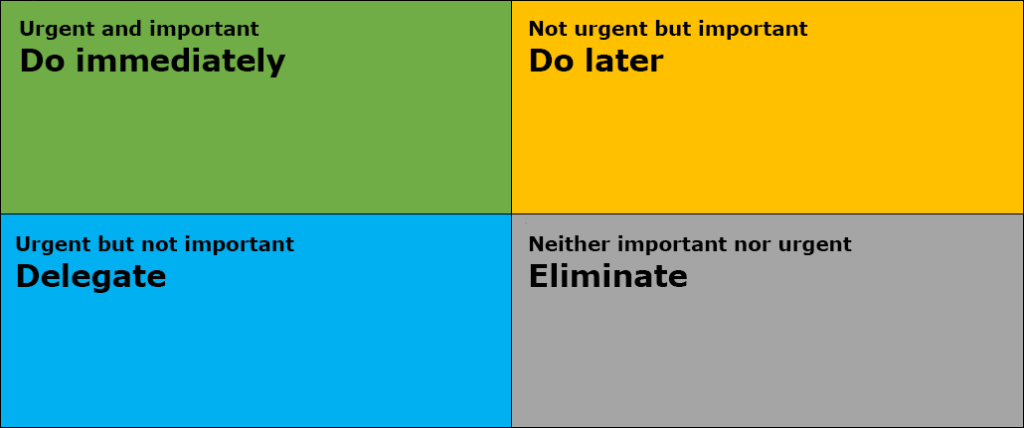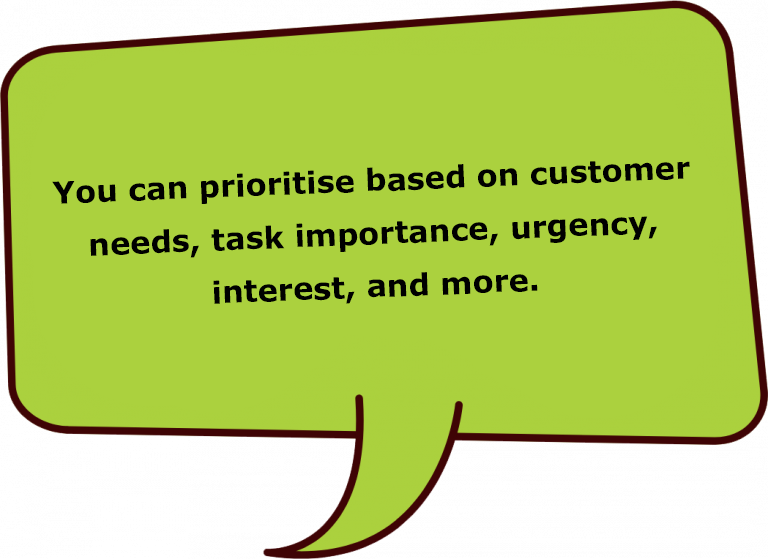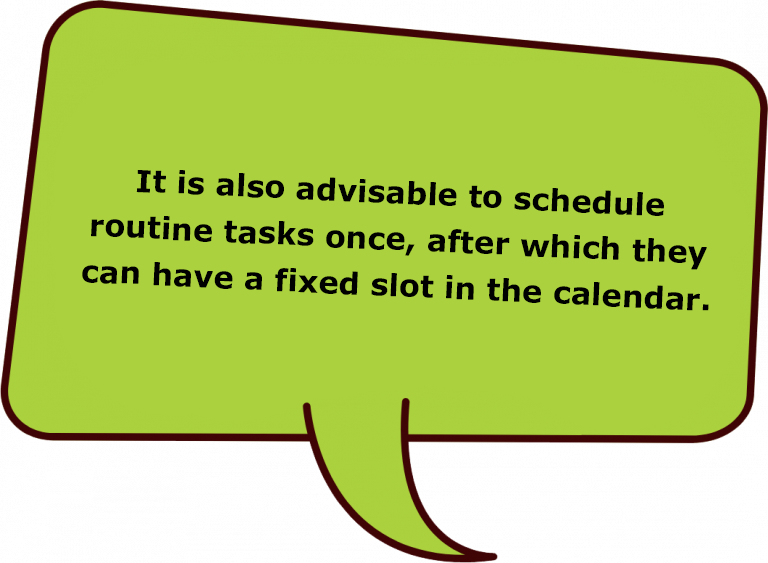Day-to-day time management
At times, managing everyday time is challenging, and balancing work, rest and other times causes pressure and exhaustion.
Time management is easier when you prioritise, schedule and plan your work in the calendar. The task list alone makes it difficult to perceive the amount of time required for each task, which makes overall time management more difficult.
We have compiled a four-point task list for everyday work time management, which, when used weekly, saves you time and improves the manageability of your work.
You can find links at the bottom of the page that will provide help for your everyday time management.
At the end of each week:
1. Classify
Fill in the Eisenhower matrix of the next week’s work as shown in the figure below. You can also make a matrix on paper or download a matrix as a Word document from the tips on the page.

2. Prioritise and estimate duration
When tasks are divided according to the Eisenhower matrix, it is easier to focus on important and urgent jobs. Consider which tasks are most important and start with them. After prioritising the work, estimate the duration of the various tasks. This makes it easier to schedule your work in the calendar.

Only do one task at a time. It speeds up the completion of tasks. Focusing also increases the sense of work management – interruptions and multitasking are less effective. However, interruptions cannot always be avoided. Try to create an environment for concentration. For example, working with the Pomodoro technique seeks to simultaneously find the best possible level of concentration and productivity.
3. Create a schedule
Schedule your work and appointments. List the tasks to be performed during the next working week. Scheduling work is like assembling a puzzle. Once the urgency and duration of the work is known, it is easy to put the work together in the next week’s calendar.

Keeping your calendar up to date helps you manage your workload. Also take into account possible transitions from one location to another.
When scheduling, it is important to take into account the total time of the work: you can get a lot done if you work from dusk till dawn, but this usually isn’t pleasant in the long run. In addition, the Eisenhower matrix can also be used to schedule for a longer period of time tasks that need to be completed at certain times.
Also plan breaks for your working day. Regular food breaks are important and keep you alert as long as the meals are not too heavy. It is a good idea to reserve time for recurring breaks in the working day. Breaks for exercise and other physical activity during the working day also support well-being and health. Take advantage of off-peak times in the gym, for example, whenever your work situation permits this. We have collected tips for maintaining and developing your health fitness.
4. Be flexible
Once the next week’s work has been scheduled in the calendar, build flexibility in the calendar. This is done by colour-coding the calendar for mobile and non-mobile jobs. For example, agreed meetings and customer meetings are not usually flexible; they should be handled at the agreed time.  Certain paperwork needs to be completed at a specific time. On the other hand, some paperwork can also be rescheduled if necessary. Flexible tasks should be colour-coded differently than non-flexible jobs. If new tasks arise during the week, it is easier to find a suitable time slot for them in the calendar.
Certain paperwork needs to be completed at a specific time. On the other hand, some paperwork can also be rescheduled if necessary. Flexible tasks should be colour-coded differently than non-flexible jobs. If new tasks arise during the week, it is easier to find a suitable time slot for them in the calendar.
Practical tips
Eisenhower matrix as a Word document (in Finnish)
Our blog text There’s time (in Finnish)
Useful links
Further information on the Eisenhower matrix (in Finnish)
Digital versions of the Eisenhower matrix
Read more about Pomodoro (in Finnish)
Finnish Institute of Occupational Health’s tool, Focus Clock (in Finnish)
